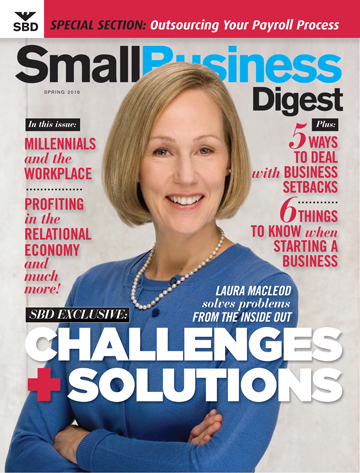Where Bad Hires Hurt Your Business the Most
 The true cost of a bad hire affects two major areas of any business: cash flow and productivity.
The true cost of a bad hire affects two major areas of any business: cash flow and productivity.
To help combat this problem, Adam Robinson co-founded Hireology.
According to Robinson either can have a very negative effect on long-term growth.
The Effect a Bad Hire has on Cash Flow: A bad hire may seem like a bump in the road but is much more of a dent from a financial perspective. Today, some organizations utilize hiring platforms to fish out the best pool of candidates for a position within their company while many are still relying on their gut. Employers want to keep hiring costs low but soon realize that a new hire comes with a price tag they may not have expected. On average, the cost to hire new employee is close to $4,000. Of course, hiring costs vary by industry and region, but prove to be very costly for everyone involved in the hiring process –especially considering on-boarding, training, and recruiting costs.
The first order of business a new employee must take care of is the paperwork that comes with the job. This process includes the ever-popular “payroll signup” form that ensures they’re on the company’s payroll.
Once a bad hire is placed onto the payroll, companies are throwing cash out the door and receiving very little business benefits in return. A business owner is consistently paying wages, federal, state and local payroll taxes. As soon as a bad hire departs, they are hit hard by their insurance company, which has just decided to increase their unemployment insurance withholding rate.
From a business owner’s point of view, a bad hire is equivalent to watching someone torch an entire year in salary. According to the United States Bureau of Labor Statistics, the average cost of a poor hiring decision can equal 30 percent of the individual’s first-year potential earnings. In nearly all cases, it is always better to have an unfilled position – no matter how painful – than to hire a warm body and pray it works out.
The Effect a Bad Hire has on Productivity: While the cash flow impact of a bad hire is substantial, the larger impact comes from the massive production costs incurred by placing a bad hire into your business.
A business owner and their team spend time trying to train and retain the new employee in addition to managing existing team members. The amount of time that adds up in the end when it comes to training a new hire will absolutely drain your productivity. Then, if the bad hire doesn’t pull their weight, it can cause your brand to lose market share or even fail.
Another cost associated with bad hires is the wasted resources spent training and working to retrain these employees. Training sessions cost a business not only production time but also money. As soon as the bad hire is making their way to the door, you and your employees are thinking that the resources could have been used to train new, more effective employees. You’re back on the market searching for a someone who will actually be worth the investment and the employees who were training them begin questioning the hiring team’s decisions. In some cases, bad hires can even cost a business their best employees if their workloads become unmanageable. When workloads get to that point, management-level employees can no longer move business initiatives forward and employees even begin to question the morale of the company itself. When morale is down, productivity goes down too because they are concerned about hitting targets and training new employees.
One way to combat low employee morale is by building a strong and intentional company culture. At my company, Hireology, we put a strong emphasis on culture fit when looking for the best candidates to hire and encourage our customers to do the same. We know that successful businesses have employees that are a solid cultural fit--not just a candidate with the right skills.
Not only does a business need to make culture a priority, it also needs to make their clients one.
Of course, business owners like to believe they’ve built such a strong relationship with their clientele that it can withstand a bad hire, however, there is definitely a negative connotation to high turnover, especially if a bad hire was in a role that required them to interact with customers. Customers can get the impression that your business isn’t stable if they are talking to different day-to-day contacts every week.
While there are some red flags to watch out for during the hiring process, most businesses are unable to determine which candidates embody the anatomy of a bad hire and many employers only begin to identify a bad hire once they actually begin working. A business is better off taking the time to fully vet applicants and to seek more qualified talent. In the end, it will boost your team’s morale and help your business thrive.
Adam Robinson is the co-founder and CEO of Hireology – the integrated hiring and retention platform that empowers multi-location, owner-operated, and independently owned businesses to build their best teams with confidence. He's the author of 'The Best Team Wins: Build Your Business Through Predictive Hiring' available at www.TheBestTeamWins.com.




